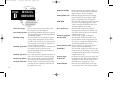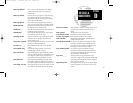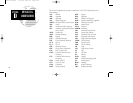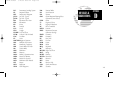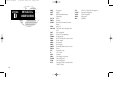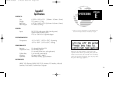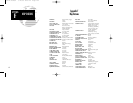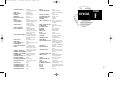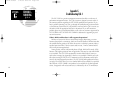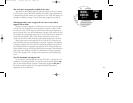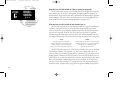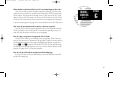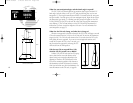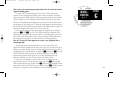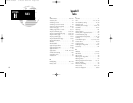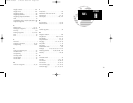
124
APPENDIX
G
TROUBLE-
SHOOTING
Q & A
Appendix G
Troubleshooting Q & A
The GPS 155XL is a precision navigation instrument that offers a wide array of
performance navigation features. The ‘Q & A’ section is designed to answer some of
the common questions regarding the GPS 155XL’s capabilities and operation. If you
have a problem operating your unit, go through the troubleshooting section and refer
to the reference section noted. If your problem is not listed in the Q & A section, use
the index to find the appropriate reference in the manual. If you still encounter a
problem, please see your authorized dealer or call or fax our customer support staff at
913-397-8200 or 913-397-8282 FAX. GARMIN is dedicated to supporting its prod-
ucts and customers.
What is RAIM, and how does it affect approach operations?
RAIM is an acronym for Receiver Autonomous Integrity Monitoring, a receiver
function that performs a consistency check on all tracked satellites. RAIM ensures that
the available satellite geometry will allow the receiver to calculate a position within a
specified protection limit (2 nm for oceanic and en route, 1 nm for terminal and 0.3
nm for non-precision approaches).
During oceanic, enroute and terminal phases of flight, RAIM will be nearly 100%.
Because of the tighter protection limit on approaches, there may be times when RAIM
is not available. The GPS 155XL automatically monitors RAIM and will warn you
with an alert message (see Appendix D) when it is not available. If RAIM is not avail-
able when crossing the FAF, the ACTV annunciator will not illuminate and the pilot
must fly the missed approach procedure. The GPS 155XL’s RAIM prediction function
(see page 29) will also allow you to see whether RAIM will be available for a specified
date and time. NOTE: If RAIM is not predicted to be available for the final approach
course, the approach will not become active, as indicated by the ACTV annunciator.
155xlb manual 1/12/99 4:06 PM Page 124



